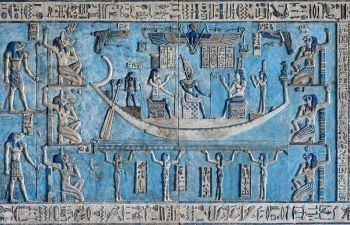2 Days trip to Luxor with Dendera and Abydo from Sahel Hashesh
Overnight Luxor two days tour from Sahel Hashesh Included Dendera temples and Abydos temples, Visit the valley of Kings, The queen Hatshepsut temple and Karnak, Overnight in Luxor then drive to Dendera temple and Abydos temple

Overnight Luxor two days tour from Sahel Hashesh Included Dendera temple s and Abydos temples, Visit the valley of Kings, The queen Hatshepsut temple and Karnak ![]() , Overnight in Luxor then drive to Dendera temple and Abydos temple
, Overnight in Luxor then drive to Dendera temple and Abydos temple
Early morning, at 05:00, Am we will pick you up from your hotel in Sahel Hashesh by a private A.C. Car to be transferred to Luxor for an overnight trip to Luxor from Sahel Hashesh, It takes 3,30 hours driving,280 K.m
Upon arrival you will meet your private tour guide who will join you to visit:
Karnak ![]() Temple: No site in Egypt is more impressive than Karnak
Temple: No site in Egypt is more impressive than Karnak ![]() . It is the largest temple complex ever built by man, and represents the combined achievement of many generations of ancient builders and pharaohs. The Temple of Karnak
. It is the largest temple complex ever built by man, and represents the combined achievement of many generations of ancient builders and pharaohs. The Temple of Karnak ![]() is actually three main temples, smaller enclosed temples, and several outer temples situated on 247 acres of land.
Valley of the Kings :
The final resting place of Egypt’s rulers from the 18th to 20th dynasty, it is home to tombs including the great pharaoh Ramses II and boy pharaoh Tutankhamen.
he tombs were well stocked with all the material goods a ruler might need in the next world. Most of the decoration inside the tombs still well preserved.
Hatshepsut Temple:
It is one of the most beautiful & best preserved of all of the temples of Ancient Egypt. The temple was built on three levels with two wide ramps in a central position joining the levels together.
Colossi of Memnon:
Two massive stone statues of king Amenhotep III are the only remains of a complete mortuary temple.
The statues are made from blocks of quartzite sandstone which exist in Cairo then moved 700 KM to Luxor
Have your lunch on a Nile View restaurant before we drive you back to your hotel in Sahel Hashesh.
Overnight at 3 stars Hotel.(you have the flexibility to change)
is actually three main temples, smaller enclosed temples, and several outer temples situated on 247 acres of land.
Valley of the Kings :
The final resting place of Egypt’s rulers from the 18th to 20th dynasty, it is home to tombs including the great pharaoh Ramses II and boy pharaoh Tutankhamen.
he tombs were well stocked with all the material goods a ruler might need in the next world. Most of the decoration inside the tombs still well preserved.
Hatshepsut Temple:
It is one of the most beautiful & best preserved of all of the temples of Ancient Egypt. The temple was built on three levels with two wide ramps in a central position joining the levels together.
Colossi of Memnon:
Two massive stone statues of king Amenhotep III are the only remains of a complete mortuary temple.
The statues are made from blocks of quartzite sandstone which exist in Cairo then moved 700 KM to Luxor
Have your lunch on a Nile View restaurant before we drive you back to your hotel in Sahel Hashesh.
Overnight at 3 stars Hotel.(you have the flexibility to change)

Breakfast at your hotel then you will be accompanied by your private tour guide and a private air-conditioned vehicle to visit:
Drive to Abydos temple.
Abydos temple
Considered one of the most important archaeological sites of Ancient Egypt, the sacred city of Abydos was the site of many ancient temples, including Umm el-Qa’ab, a royal necropolis where early pharaohs were entombed. These tombs began to be seen as extremely significant burials and in later times it became desirable to be buried in the area, leading to the growth of the town’s importance as a cult site.
Today, Abydos is notable for the memorial temple of Seti I, which contains an inscription from the nineteenth dynasty known to the modern world as the Abydos King List. It is a chronological list showing cartouches of most dynastic pharaohs of Egypt from Menes until Ramesses I, Seti’s father. The Great Temple and most of the ancient town are buried under the modern buildings to the north of the Seti temple. Many of the original structures and the artifacts within them are considered irretrievable and lost; many may have been destroyed by the new construction.
Abyos temple Located about 2.5 hours by car north of Luxor , Abydos was one of the most important religious sites to ancient Egyptians. Much like modern Muslims hope to complete a pilgrimage to Mecca at least once in their lifetime, ancient Egyptians would have hopes to visit Abydos, which for them was strongly associated with the entrance into the afterlife.
Although there were several temples constructed here, the largest and most significant is known as the Temple of Seti I. Seti I was the father of the great Ramesses II, who actually completed the construction of most of the temple after his father’s death.
Coming to power only 30 years after the upheaval associated with Akhenaten’s heretical rule, known as the Amarna Period, Seti I was concerned with reestablishing faith in the pantheon of Pre-Amarna gods that Akhenaten had sought to destroy.As a result, the temple he built contains small chapels dedicated to each of the major gods: Ptah, Re-Harakhte, Amun-Re, Osiris, Isis, Horus, and also one to Seti himself.Much of the temple complex is no longer present, including the pylon and the first two courtyards so visitors to enter through a doorway into the hypostyle hall. Many of the wall reliefs inside are well preserved and the reliefs toward the back of the temple, completed during Seti’s reign, are considered to be among the finest in any temple throughout Egypt.Since Abydos is more difficult to reach than many sites, it is not very heavily visited. Occasionally tour buses come from the beach resorts or with loads of cruise ship passengers from the Red Sea, but it you time your visit well, you might find yourself with the temple complex to yourself.
Then Drive to Dendera temple
Dendera temple
The Temple of Hathor was largely constructed during the Late Ptolemaic period, specifically during the reign of Ptolemy XII and Cleopatra VII. Later additions were made during the Roman period. Although built by a dynasty of rulers who were not native Egyptians themselves, the design of this temple has been found to be in accordance to that of other classical Egyptian temples, with the exception of the front of the hypostyle hall, which, according to an inscription above the entrance, was constructed by the Emperor Tiberius.
Apart from these, there are also scenes in the temple complex portraying the Ptolemaic rulers. For example, carved onto the external face of one of the temple walls is a huge relief of Cleopatra VII and her son by Julius Caesar and co-ruler, Ptolemy XV (better known as Caesarion). The two Ptolemaic rulers are shown dressed in Egyptian garb, and offering sacrifices.
Hathor was also regarded as a goddess of healing, and this is evident in the presence of a sanatorium in the temple complex. Here, pilgrims would come to be cured by the goddess. Sacred water (which was made holy by having it poured onto statues inscribed with sacred texts) was used for bathing, unguents were dispensed by the priests of Hathor, and sleeping quarters were provided for those hoping that the goddess would appear in their dreams, and so aid them.

Inclusions:
- Pick up services from your hotel in Sahel Hashesh and return
- Mineral water
- lunch meal
- All Service charges & taxes
- Entrance fees
- One Night in Hotel in Luxor
Exclusions:
- Any Extra
- Tipping
- Felucca trip
Please remember to bring:
- • Camera
• sunglasses
Reviews

























